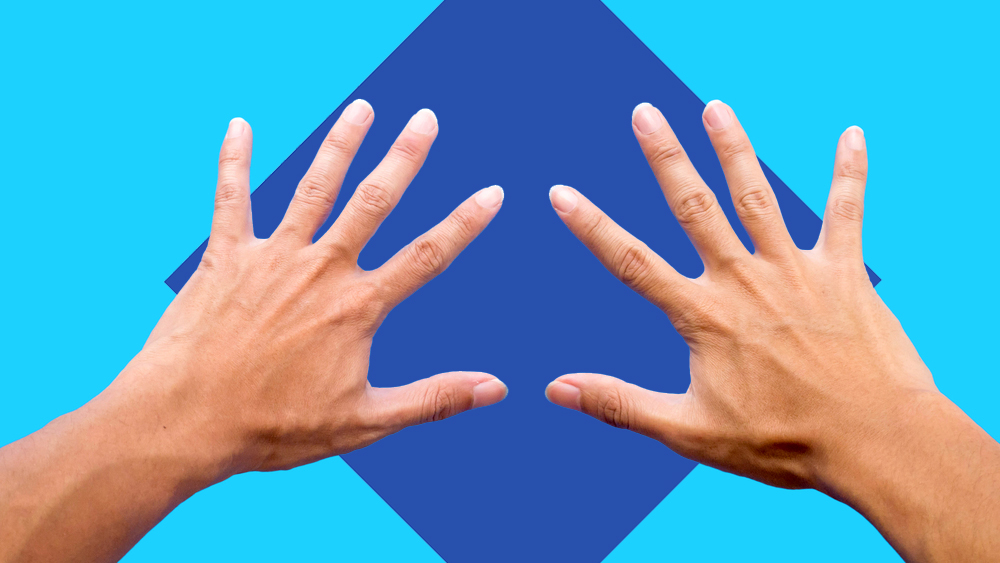Why left-handed people are likelier to be mentally ill

- Only about 10% of the population is left-handed, yet lefties make up as much as 40% of cases of psychotic disorders.
- The brains of left-handers are organized slightly differently than the brains of right-handers, due to genetic differences or environmental stressors during brain development. People with psychotic disorders share the same brain differences.
- While left-handedness is linked to mental illness, it is also linked to creativity.
Left-handed people (who we will call “lefties” for brevity) are those people who write with their left hand or are physically dominant on the left side of their body. Despite making up only about 10% of the population, they constitute as much as 40% of cases of psychotic disorders like schizophrenia. These are some of the most severe types of mental illness, characterized by hallucinations, bizarre beliefs, and losing touch with reality. Why are lefties likelier to be mentally ill?
To answer this question, it’s helpful to understand why most people are right- or left-handed in the first place, and how handedness relates to brain development, structure, and function.
Why are we right- or left-handed in the first place?
Lateralization — that is, localization of a function or behavior to one side of the body or brain — occurs across species. For instance, some species of spiders primarily use their left legs more when handling prey, and honeybees primarily use their right eye when learning food associations. We humans have been around 90% right-handed since at least the Paleolithic period, over 10,000 years ago.
But why are we lateralized in the first place? In short, lateralization is probably helpful because it makes our brains more specialized and efficient by creating “areas of expertise.”
Just as with most complex business organizations, the human brain consists of multiple areas with different jobs. Broadly, human brains are divided into left and right hemispheres, and each hemisphere in turn is implicated in different functions.
Such separation allows for efficiency. Grouping related functions together allows them to specialize, decreases redundancy with other brain areas, and literally decreases the space that relevant neural signals must travel to communicate. Lateralized brains generally are more skilled at various responsibilities and are particularly adept at completing simultaneous tasks — like looking for food while monitoring for predators.
In particular, the right hemisphere appears specialized for broader processes like integrating visual information, whereas the left is more involved in language and motor control. And since the left hemisphere tends to control the right side of the body, most people are right-handed.
Why most people are right-handed
Lateralized brains may help make individuals more efficient and successful. But why would an entire population tend to be lateralized in the same direction? Lateralization at the population level — such that everyone tends to be either left- or right-handed — appears to improve social coordination.
The idea is that when most people are right-handed, we are better able to predict each other’s behaviors — ranging from which hand to shake, to which way to design scissors, to which way to turn your head while kissing. For example, red wood ants mainly use their right antenna when exchanging food, reducing errors in which antennas to touch.
Explaining the 10% who are left-handed
If being right-handed is advantageous, then evolutionary theory would predict that over time, lefties would be less likely to pass on their genes and eventually die out. So why have rates of left-handedness remained steady for millennia? There are two reasons.
First, genetics. According to the fighting hypothesis, lefties are better at fighting and other competitions. Thus, they continue to pass along left-handed genes despite potential deficits in other areas. Indeed, about 25% of handedness is heritable, and lefties are more likely than righties to be elite athletes.
Second, environmental factors contribute to becoming left-handed, such as brain injury and early life stressors. For example, research finds that brain lesions in the left hemisphere, especially those occurring before age six, may increase reliance on the right hemisphere. (And remember the right hemisphere generally controls the left side of the body.)
Similarly, perinatal stress, infant resuscitation, and low birthweight are all positively associated with left-handedness. This suggests that infections, lack of nutrition, hypoxia, and other stressors might affect early brain formation and lateralization. Indeed, one study using 4D ultrasounds found that fetuses were significantly more likely to touch their faces with their left hands when mothers reported high levels of stress.
Brain differences in left-handed people
Whether due to genes or environmental stressors, lefty brains are simply a bit different than those of their right-handed counterparts. Recent large-scale genetic research has found that certain genes important to brain development are also associated with left-handedness. The study analyzed data from over 350,000 people and found that lefties were likelier to have variations in three gene regions important to development of brain cells’ cytoskeletons.
Also, lefty brains appear less lateralized and more interconnected. For example, a meta-analysis of 43 studies found that left-handers have a larger corpus callosum (the nerve fibers that bridge the left and right hemispheres), and fMRI measures show that their right and left hemispheres are more connected when using language.
Left-handedness and mental illness
How does this all relate to lefties having higher rates of psychotic disorders? Scientists are still working out the details, but one likely possibility is that the same brain differences that contribute to left-handedness also contribute to psychotic disorders. Just like lefties, psychotic patients exhibit:
- a higher likelihood of subtle brain damage during development due to maternal or childhood stress (e.g., malnutrition, psychological stress, infection).
- less brain lateralization, especially with regard to brain regions related to language, resulting from either brain damage or genetic differences.
In turn, researchers theorize that these unique brains are more likely to process stimuli or thoughts abnormally, leading to psychosis.
The benefits of left-handedness
Even if you are a lefty, the chance of developing a severe psychotic disorder is low: The general population’s lifetime prevalence is under 1%, so even if the risk is quadrupled, it is still relatively small. And should a psychotic disorder develop, treatment is improving. Moreover, lefties are at lower risk of other health problems, including ulcers and Parkinson’s disease.
The world is filled with healthy and successful lefties. Four of the past eight U.S. presidents and many of the world’s most famous artists, scientists, and thinkers have been left-handed or ambidextrous. This may be because left-handedness is linked with better verbal performance and increased creativity.
So while the same brain differences that lead to left-handedness may lead to psychotic disorders, these brain differences also come with benefits to both the individual and the world.





